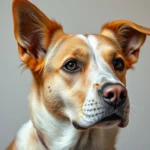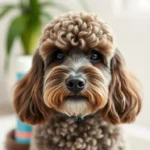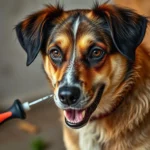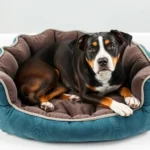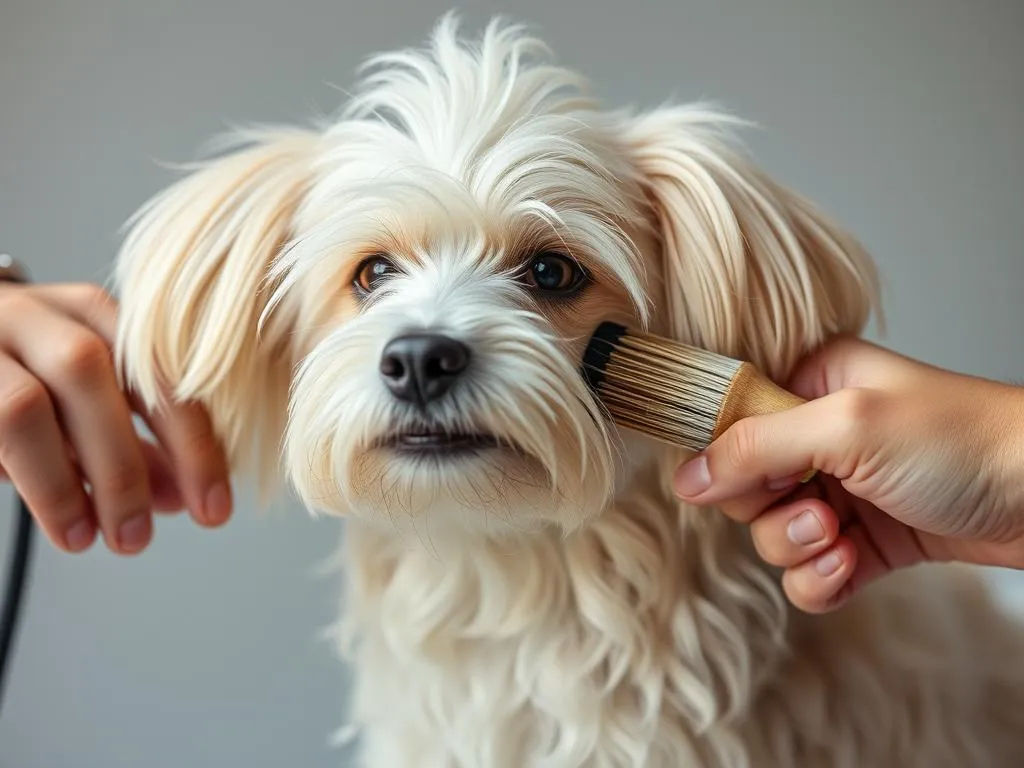
Introduction
Dog health care is a crucial aspect of pet ownership, encompassing various practices that ensure your furry friend remains happy and healthy. One of the most significant components of this care is grooming. Grooming, particularly how to brush dog hair, plays a vital role in maintaining your dog’s overall well-being. Regular brushing not only helps keep your dog looking beautiful but also contributes to their physical and emotional health.
The Importance of Regular Dog Grooming
Health Benefits
Regular grooming is essential for your dog’s health, offering numerous advantages:
- Reduces the risk of skin infections: Brushing removes dirt, debris, and loose hair that can accumulate on your dog’s skin. This helps prevent skin irritations and infections.
- Helps in detecting parasites: Frequent brushing allows you to check for fleas, ticks, and other parasites that could harm your dog. Early detection is key to effective treatment.
- Promotes better circulation: The act of brushing stimulates the skin and promotes blood flow, which can contribute to healthier skin and coat.
Psychological Benefits
Grooming is not just about cleanliness; it also has psychological benefits:
- Strengthens bond between dog and owner: Spending time grooming your dog fosters a strong bond and builds trust between you and your pet.
- Reduces anxiety and stress in dogs: Regular grooming sessions can help calm anxious dogs, making them feel more secure.
- Encourages positive behavior: A well-groomed dog is often more comfortable and confident, which can lead to better behavior at home and in public.
Understanding Your Dog’s Coat Type
Different Coat Types
Before diving into how to brush dog hair, it’s essential to understand your dog’s coat type, as different breeds have unique grooming needs:
- Short-haired breeds: These dogs have a smooth coat that requires less frequent brushing but still benefits from regular grooming.
- Long-haired breeds: Breeds like Golden Retrievers and Shih Tzus need regular brushing to prevent mats and tangles.
- Curly and wavy coats: Dogs like Poodles require specialized grooming techniques to maintain their coats and prevent matting.
Brushing Needs by Coat Type
Each coat type has its own brushing frequency and tools:
- Short-haired breeds: Brush once a week with a bristle brush to remove loose hair and distribute natural oils.
- Long-haired breeds: Brush at least 2-3 times a week or daily during shedding seasons with a slicker brush.
- Curly and wavy coats: Typically require brushing every few days with a comb or a rake to prevent matting.
Essential Tools for Brushing Dog Hair
Basic Grooming Tools
Having the right tools is crucial for effective grooming:
- Types of brushes:
- Slicker brushes: Great for removing mats and tangles in long-haired breeds.
- Bristle brushes: Ideal for short-haired breeds to distribute oils and remove loose hair.
-
Combs: Useful for finishing touches and detangling fur.
-
Deshedding tools: These help remove loose undercoat fur, especially during shedding seasons.
Additional Grooming Supplies
Alongside brushing tools, you may consider the following:
- Dog shampoos and conditioners: Choose products specifically designed for dogs to maintain their skin and coat health.
- Nail clippers and ear cleaning supplies: Regular nail trimming and ear cleaning are essential for overall dog hygiene.
- Treats for positive reinforcement: Reward your dog during and after grooming to create a positive association with the process.
Step-by-Step Guide on How to Brush Dog Hair
Preparing Your Dog for Grooming
Creating a comfortable environment can make a significant difference in your dog’s grooming experience:
- Creating a calm environment: Choose a quiet space where your dog feels secure. Consider having treats on hand to reward good behavior.
- Gathering necessary tools: Ensure you have all your grooming tools ready before starting.
The Brushing Process
Understanding the brushing process is key:
- How to properly hold the brush: Grip the brush firmly, using a comfortable angle that allows you to reach all areas of your dog’s body.
- Techniques for brushing different areas:
- Back and sides: Brush gently in the direction of hair growth.
- Legs: Use a gentle touch to avoid tugging on sensitive areas.
- Belly: Be cautious, as many dogs are ticklish here. Start with light strokes.
-
Tail: Brush gently, as this area can be sensitive and prone to tangles.
-
How to deal with tangles and mats: If you encounter a mat, hold the base of the hair near the skin to avoid pulling and use a slicker brush or comb to carefully work through it.
Post-Grooming Care
Once the brushing session is complete, it’s essential to check for any skin issues:
- Cleaning up loose hair: Use a vacuum or lint roller to clean up any excess fur that may have fallen during grooming.
- Checking for skin issues or parasites: Inspect your dog’s skin for any signs of irritation, redness, or parasites.
- Rewarding your dog after grooming: Give your dog a treat or extra playtime to reinforce positive behavior during grooming.
Common Mistakes to Avoid When Brushing Dog Hair
Over-Brushing
While grooming is essential, over-brushing can cause discomfort:
- Signs of irritation or discomfort in dogs: Watch for signs like flinching, whining, or trying to escape the grooming process.
- Recommended brushing frequency: Follow the guidelines based on your dog’s coat type to avoid overdoing it.
Using the Wrong Tools
Choosing the right tools is crucial for effective grooming:
- Risks of using inappropriate brushes for specific coat types: Using the wrong brush can lead to skin irritation or unmanageable tangles.
- How to select the right tools: Research or consult with a groomer to find the best tools for your dog’s specific coat type.
Additional Grooming Tips for Optimal Dog Health
Seasonal Considerations
Your dog’s grooming routine may need to adapt with the seasons:
- Adjusting grooming routine according to season: Be extra vigilant during shedding seasons; you may need to brush daily to manage loose hair.
- Importance of hydration and skin care: Ensure your dog has access to fresh water and consider using moisturizing products if their skin becomes dry.
Professional Grooming vs. DIY
Deciding between professional grooming and DIY depends on various factors:
- When to consider professional grooming services: If your dog has a particularly challenging coat or if you’re unsure about grooming techniques, a professional groomer can help.
- Benefits of a professional groomer: Professionals often have specialized tools and techniques that can ensure a thorough grooming session.
Conclusion
Regular brushing is an integral part of dog health care that contributes to your pet’s overall well-being. Not only does it keep their coat clean and healthy, but it also strengthens the bond between you and your dog. By establishing a consistent grooming schedule and understanding the right techniques, you ensure that your dog remains happy and healthy. Embrace the opportunity to build a strong relationship with your furry friend through the art of grooming.
FAQs about Dog Grooming
How often should I brush my dog?
The frequency of brushing depends on your dog’s coat type. Short-haired breeds may only need weekly brushing, while long-haired and curly breeds may require daily grooming.
What do I do if my dog doesn’t like being brushed?
Start by introducing the brush gradually. Use treats to reward your dog for staying calm, and consider breaking the sessions into shorter, more manageable timeframes.
Can brushing replace regular baths?
Brushing is an essential part of grooming, but it does not replace the need for regular baths. Bathing helps remove dirt and oils that brushing alone cannot address.
How can I make grooming a positive experience for my dog?
Use positive reinforcement, such as treats and praise, during and after grooming. This helps your dog associate grooming with positive experiences and can reduce anxiety.
By addressing these questions and following the steps outlined above, you can ensure that your grooming sessions are effective and enjoyable for both you and your dog.
